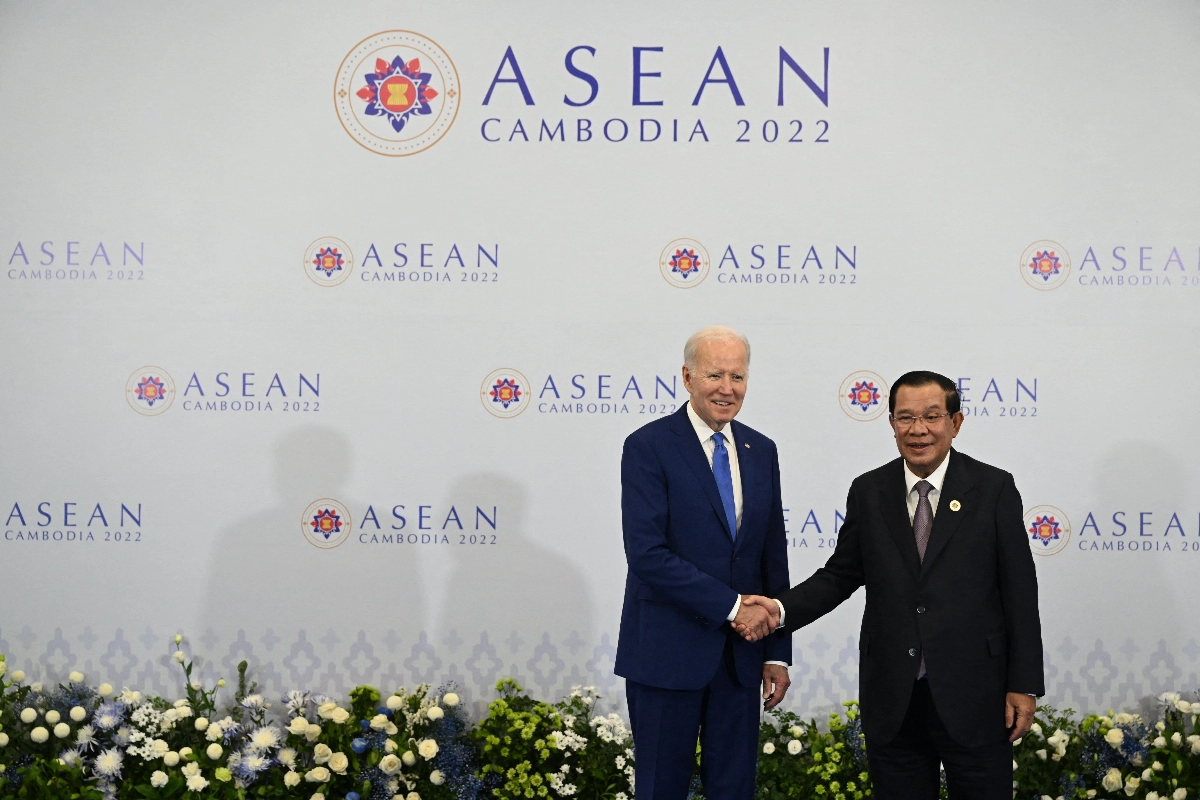The ties between ‘Asia and South East Asian Nations’ (ASEAN) and the United States got a boost on Saturday as they formally upgraded their relationship to a comprehensive strategic partnership. US President Joe Biden’s maiden trip to Southeast Asia since his Presidency comes at a time when Washington is seeking to advance its role as a security partner among Asian nations that count on China as its biggest trading ally as well as an adversary.
The all-important agreement should have far-reaching implications. It will facilitate both sides to work more closely in wide-ranging aspects for the long term, including areas such as energy research and climate change.
Singapore PM Lee sang high praise for Biden
During a meeting between regional leaders and US President Joe Biden, Singapore Prime Minister Lee Hsien Loong while meeting President Biden echoed his optimism with the new agreement and reiterated that ASEAN-US relations have achieved a new milestone.
“Singapore will work with the US to strengthen our cooperation under the comprehensive strategic partnership, besides the ASEAN bloc appreciates the US continued focus on the region, even amid its many preoccupations in other parts of the world,” he added.PM Lee also welcomed US collaboration on research and the deployment of clean energy in the region.
Singapore and the US are working on a feasibility study on enhancing regional networks to strengthen energy security and grid resilience, a step towards better energy integration and the development of the ASEAN Power Grid.
The ASEAN Power Grid is an initiative to construct regional power interconnection on cross-border bilateral terms, before gradually expanding to a sub-regional basis, with an aim to achieve an integrated Southeast Asian power system.
The overall progress of the region largely depends on a stable global geopolitical climate, and Russia’s invasion of Ukraine has caused much uncertainty.
Regarding US and China, PM Lee called their relationship the most far-reaching one in the world – and also it affects the peace and stability of Southeast Asia.
Tensions have grown between the US and China in several areas, including in Taiwan, but countries in the region have a predicament to maintain good relations with both Washington and Beijing.
The US may work with China to manage the tensions, build mutual trust at the highest level and work out a modus operandi, an arrangement that lets parties facing disagreements coexist peacefully, either indefinitely or until a final settlement is reached.
Intermittent skirmishes in the South China Sea, which is a key waterway for global trade, and thus of matter of great concern not just to claimant states, but also to the international community.
ASEAN has always welcomed the South China Sea Code of Conduct which is under international law, including the 1982 United Nations Convention on the Law of the Sea, which safeguards the rights and interests of all parties.
Meanwhile, the US has provided over US$860 million (S$1.18 trillion) in assistance to its ASEAN partners in 2022. This assistance is supporting climate ambition and the clean energy transition, access to education, strengthened health systems, security modernization efforts, rule of law and human rights, and more. Biden, during the ASEAN summit, announced further assistance of US$850 million for Southeast Asia for 2023.
China, US battle for supremacy in ASEAN: Who has the edge?
The US and China are locked in a battle for influence over Southeast Asia, home to more than 660 million people and the fifth-largest economy in the world. But when it comes to economics and trade, America has a long way to go.
Over the years, China has established considerable trade connects with ASEAN, which is strategically located on its doorstep and covers key trade routes. China has leapfrogged Washington’s economic supremacy in the region.
A quick study of the China-US trade battle in the ASEAN region
- China-ASEAN overall trade in 2022 is US$878.2 billion (S$1.2 trillion), more than 22 times the value of trade as compared to that of 2000.
- Singapore is South-East Asia’s trade and economic hub, and the island nation has free trade agreements with both the US and China. Its free trade agreements have made it an attractive hub for US and Chinese firms expanding into the region. China’s trade with Singapore is 94.1 billion USD whereas US lags behind with 65.2 billion USD.
- US’ trade with Indonesia is worth US$36.5b, which is about 30% of China’s trade with Indonesia, worth US$124.4
- Vietnam’s trade with China is worth US$230.2b, which is twice that of Vietnam’s trade with US, worth US$112.9b.
- US’ investments in Singapore are valued at US$14.6b, which is 2½ times that of China’s investments in Singapore, valued at US$5.9b.
Based on the above data it can be easily surmised that China has already established an edge over the US in terms of trade relations. However, the ASEAN nations have always been wary of China’s expansionist misadventures. China carries a long list of cross-border conflicts with the ASEAN nations besides getting into territorial conflicts in the South China Sea has been its regular trait. ASEAN nations have no other alternative rather than bringing the US in the arena for maintaining a balance of power.
Also read: Discount on cars: Renault is offering huge discounts on these models, details here
Keep watching our YouTube Channel ‘DNP INDIA’. Also, please subscribe and follow us on FACEBOOK, INSTAGRAM, and TWITTER












